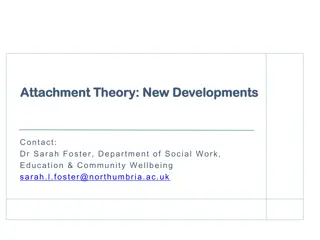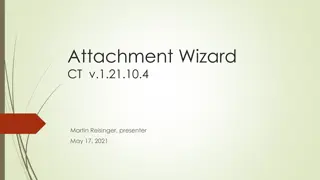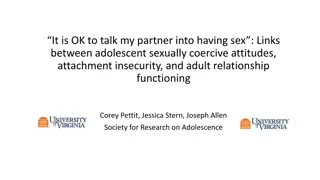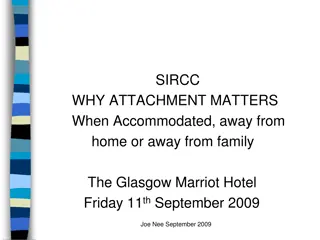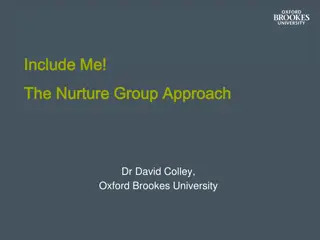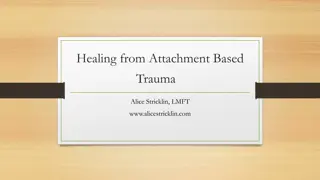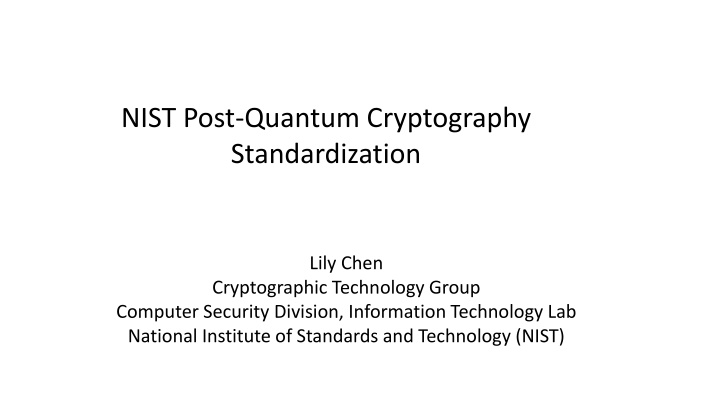
Impact of Quantum Computing on Cryptography
Explore the implications of quantum computing on encryption standards such as RSA and Diffie-Hellman, driving the need for quantum-resistant cryptographic solutions in the evolving cyber landscape.
Download Presentation

Please find below an Image/Link to download the presentation.
The content on the website is provided AS IS for your information and personal use only. It may not be sold, licensed, or shared on other websites without obtaining consent from the author. If you encounter any issues during the download, it is possible that the publisher has removed the file from their server.
You are allowed to download the files provided on this website for personal or commercial use, subject to the condition that they are used lawfully. All files are the property of their respective owners.
The content on the website is provided AS IS for your information and personal use only. It may not be sold, licensed, or shared on other websites without obtaining consent from the author.
E N D
Presentation Transcript
NIST Post-Quantum Cryptography Standardization Lily Chen Cryptographic Technology Group Computer Security Division, Information Technology Lab National Institute of Standards and Technology (NIST)
NIST Crypto Standards - Overview Crypto standards Guidelines Symmetric key based Public key based AES (FIPS 197 ) TDEA (800-67) Hash usage/security (800-107) Signature (FIPS 186) Transition (800-131A) Modes of operations (800 38A-38G) Key establishment (800-56A/B/C) Key generation (800-133) SHA-1/2 (FIPS 180) and SHA-3 (FIPS 202) Key management (800-57) Tools Randomized hash (800-106) HMAC (FIPS 198) RNG (800-90A/B/C) KDF (800-108, 800-135) SHA3 derived functions (parallel hashing, KMAC, etc. (800-185)
Public (Asymmetric) Key Cryptography Digital Signatures FIPS 186-4 DSA and ECDSA (Discrete Logarithm-Based) RSA (Factorization-Based) Key Establishment Schemes NIST SP 800-56A (Discrete Logarithm-Based) DHs, MQVs (over a finite field or Elliptic curve) NIST SP 800-56B (Factorization-Based) RSA based key transport and key agreement
Impact of Quantum Computers on RSA and DH Quantum computing changed what we have believed about the hardness of discrete log and factorization problems Using quantum computers, an integer n can be factored in polynomial time using Shor's algorithm The discrete logarithm problem can also be solved by Shor s algorithm in polynomial time As a result, the public key cryptosystems deployed since the 1980s will need to be replaced RSA signatures, DSA and ECDSA (FIPS 186-4) Diffie-Hellman Key Agreement over finite fields and elliptic curves(NIST SP 800-56A) RSA encryption (NIST SP 800-56B) We have to look for quantum-resistant counterparts for these cryptosystems Quantum computing also impacted security strength of symmetric key based cryptography algorithms Grover s algorithm can find AES key with approximately 2? operations where n is the key length Intuitively, we should double the key length, if 264 quantum operations cost about the same as 264 classical operations
Look for Quantum Resistant Counterparts for RSA and DH Crypto standards Guidelines Symmetric key based Public key based AES (FIPS 197 ) TDEA (800-67) Hash usage/security (800-107) Signature (FIPS 186) Transition (800-131A) Modes of operations (800 38A-38G) Key establishment (800-56A/B/C) Key generation (800-133) SHA-1/2 (FIPS 180) and SHA-3 (FIPS 202) Key management (800-57) Tools Randomized hash (800-106) HMAC (FIPS 198) RNG (800-90A/B/C) KDF (800-108, 800-135) SHA3 derived functions (parallel hashing, KMAC, etc. (800-185)
What we have done Milestones in a Long Journey 2012 NIST begins PQC project Research and build NIST team April 2015 1st NIST PQC workshop Feb 2016 NIST Report on PQC (NISTIR 8105) Feb 2016 NIST preliminary announcement of standardization plan Aug 2016 Draft call for proposals, Draft submission requirements and evaluation criteria released for public comments Sep 2016 Comment period ends Dec 2016 Announcement of finalized requirements and criteria(Federal Register Notice) Nov 2017 Submission Deadline
NIST PQC Standardization Plan Nov. 30, 2017 Submission deadline April 2018 Workshop Submitters presentations 3-5 years Analysis phase - NIST reports on findings and more workshops/conferences 2 years later Draft standards available for public comments Narrowed pool will undergo a second round (12-18 months) NIST will post complete and proper submissions Second conference to be held NIST PQC Standardization Conference (co- locate with PQCrypto, April 2018) Minor changes allowed Possible third round of evaluation, if needed NIST will release reports on progress and selection rationale Initial phase of evaluation (12-18 months) Internal and public review No modifications allowed
NIST PQC Standardization Multiparty Process NIST has fully engaged with Research community for algorithm design, security analysis, performance assessment, etc. Standard organizations for collaboration and interoperability Standards user community for application and implementation requirements, for migration/transition Hardware/software venders, system designers, government agencies, testing labs, etc. Compared with 20-30 years ago, we have a much more mature user community on cryptography applications What can the standards users expect for this process?
Post-Quantum Cryptography Standardization Scope The scope is determined by the NIST current standards Signatures Public-key signature schemes for generating and verifying digital signatures (FIPS 186-4) Encryption/key-establishment Encryption scheme used for signatures Key transport from one party to another (See SP 800-56B) Exchanging encrypted secret values between two parties to establish shared secret value (see SP 800-56B) Key-agreement Schemes like Diffie-Hellman key exchange (see SP 800-56A) We plan to standardize the PQC algorithms in new standards That is, they will not be revisions or additional parts of the existing standards Key Encryption agreement
PQC Families - Actively Researched as Examples Lattice-based NTRUencrypt Signature, e.g. Bliss (Ring-based) Learning with Errors (e.g. Key Agreement - New Hope) Code-based McEliece encryption and the variants Multivariate Rainbow (signature), Quartz (signature), etc. Hash-based signatures LMS, XMSS, SPHINCS Isogeny-based schemes Supersingular isogeny Diffie Hellman key exchange (SIDH) XMSS LMS Signatures Quartz Rainbow Bliss SPHINCS SIDH Key Encryption agreement McEliece New Hope NTRUencrypt
The Selection Criteria for PQC Standardization Secure against both classical and quantum attacks Security notions: encryption (IND-CCA2), key agreement (ephemeral, IND-CPA), and signatures (EUF-CMA) Classical security strength Quantum security strength Performance on "classical" platforms key size, signature size, computational efficiency, and flexibility Other properties Drop-in replacements - Compatibility with existing protocols and networks such as TLS, IKE, etc. Perfect forward secrecy, like ephemeral Diffie-Hellman Resistance to side-channel attacks Misuse resistance, and More
Security Notions Signatures Existentially unforgeable with respect to adaptive chosen message attack (EUF-CMA) Assume the attacker has access to no more than 264 signatures for chosen messages Encryption Semantically secure with respect to adaptive chosen ciphertext attack (IND-CCA2) Assume the attacker has access to no more than 264 decryptions for chosen ciphertexts Ephemeral key-agreement Semantic security with respect to chosen plaintext attack (IND-CPA security)
Quantum security Currently NIST cryptography standards specify parameters for classical security levels at 112, 128, 192, 256 bits For RSA public module n, |n| = 2048 bits, the estimated classical security strength is 112 bits For ECDH, key agreement over curve P-256 is estimated to support classical security of 128 bits For PQC standardization, need to specify concrete parameter sets with security estimates The bits of quantum security requirements in the draft call for proposals (CFP) received many comments No clear consensus on best way to measure quantum attacks Uncertainties The possibility that new quantum algorithms will be discovered, leading to new attacks The performance characteristics of future quantum computers, such as their cost, speed and memory size
Quantum Security Strength Categories Security Description I At least as hard to break as AES128 (exhaustive key search) II At least as hard to break as SHA256 (collision search) III At least as hard to break as AES192 (exhaustive key search) IV At least as hard to break as SHA384 (collision search) V At least as hard to break as AES256 (exhaustive key search) Computational resources should be measured using a variety of metrics Number of classical elementary operations, quantum circuit size, etc. Consider realistic limitations on circuit depth (e.g. 240 to 280 logical gates) May also consider expected relative cost of quantum and classical gates. These are understood to be preliminary estimates
Cost and Performance Standardized post-quantum cryptography will be implemented in classical platforms Diversified applications require different properties from extremely processing constrained device to limited communication bandwidth May need to standardize more than one algorithm for each function to accommodate different application environments Allowing parallel implementation for improving efficiency is certainly a plus
Complexities of PQC Standardization Much broader scope three crypto primitives Signatures, Encryption, Key agreement Against both classical and quantum attacks Security strength assessment on specific parameter selections Consider various theoretical security models and practical attacks Provably security vs. security against instantiation or implementation related security flaws and pitfalls Multiple tradeoff factors Security, performance, key size, signature size, side-channel resistance countermeasures Migrations into new and existing applications TLS, IKE, code signing, PKI infrastructure, and much more Not exactly a competition it is and it isn t
Similar to SHA-3 competition It will be an open procedure and we will engage with research communities, implementers and practitioners NIST will encourage public analysis on the submitted algorithms and make the results available NIST will hold conferences for researchers to share analysis and evaluation results NIST will release reports periodically and summarize the rationale for each selection
Different from SHA-3 competition Post-quantum cryptography is more complicated than hash function The algorithms are based on very different mathematical structures and security assumptions Straight forward comparison might be impossible We may not be able to select one single winner for each function (signature, encryption, key agreement) For interoperability reasons, we do not want to select too many algorithms for each function NIST will standardize a limited number of algorithms for each function category, instead of introducing a portfolio with many choices We may not select all the winners in one pass For a submission not to be selected may not mean it s out of the game The timeline and some selection criteria may change based on developments in the field
NIST Looks for Input from Standards User Community Feedback on special requirements on PQC for different applications Applications in Internet protocols like TLS, IKE are better understood Requirements for applications in processing and/or bandwidth constrained environment need to be explored Different trust models also propose special requirements, for example, multiple signer scenarios when using stateful hash-based signatures Application specific secure implementation issues In some applications, error or failure handling can be an issue Performance impact when applying countermeasure to side-channel attacks Transition issues The application specific life cycle Possibility to add new cryptographic algorithms without replacing the equipment Capability or limitation to support crypto agility Backward compatibility support requirement
Interaction with Standards Organizations We are aware that many international/industry standards organizations and expert groups are working on or planning to work on post quantum cryptography standards/recommendations IETF is taking action in specifying stateful hash-based signatures ETSI released quantum-safe cryptography report EU expert groups PQCrypto and SafeCrypto made recommendations and released reports ISO/IEC JTC 1 SC27 has initiated a study period for quantum-resistant cryptography since 2015 NIST is interacting and collaborating with these organizations and groups
Summary Post-quantum cryptography standardization is going to be a long journey Input from standards user community is extremely important Early stage engagement is critical See also: www.nist.gov/pqcrypto Sign up for the pqc-forum for announcements and discussion


